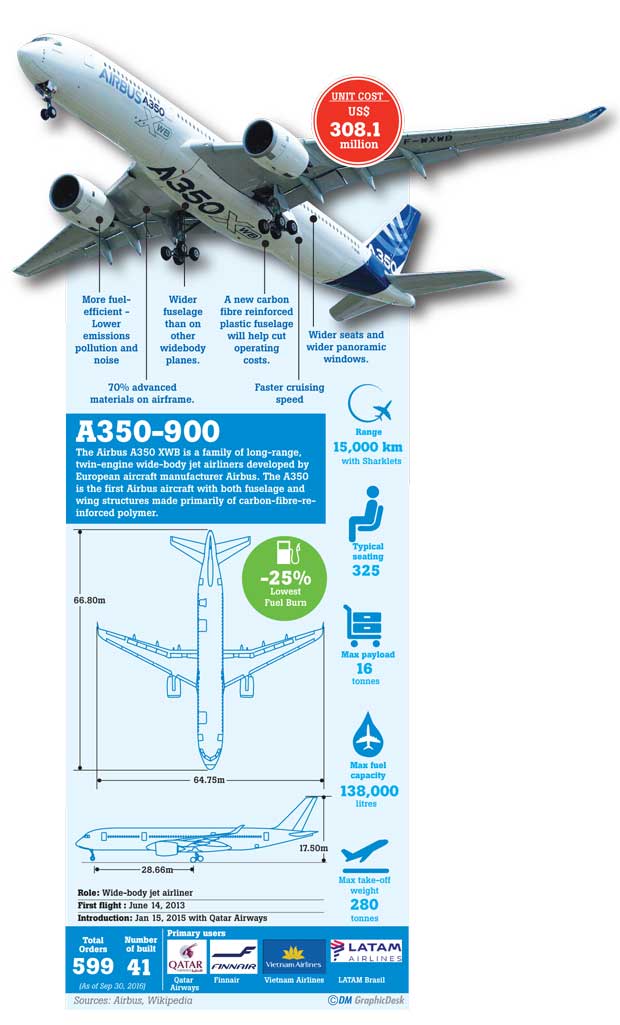Reply To:
Name - Reply Comment
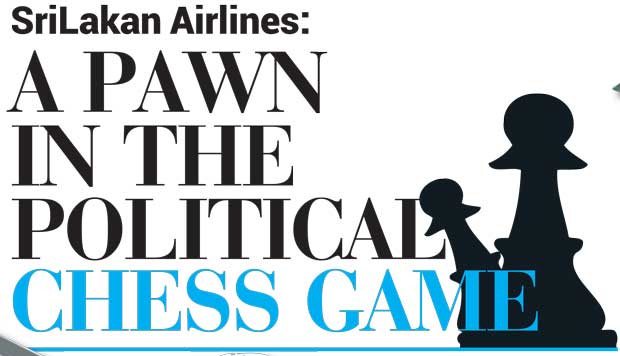
 Alot of things have been said about SriLankan Airlines, the country’s flag carrier. Though it used to be Sri Lanka’s pride in the skies, of late it has become more of an embarrassment. The dismal financial performance of the airline has made it a liability rather than an asset. The 2008 Emirates pull-out and the events that followed hadn’t helped the airline either.
Alot of things have been said about SriLankan Airlines, the country’s flag carrier. Though it used to be Sri Lanka’s pride in the skies, of late it has become more of an embarrassment. The dismal financial performance of the airline has made it a liability rather than an asset. The 2008 Emirates pull-out and the events that followed hadn’t helped the airline either.
Lately, SriLankan has been a hot topic debated on the political stage. Soon after the presidential election in 2015, Prime Minister Ranil Wickremesinghe commissioned the human rights lawyer and anti-corruption activist, J.C.Weliamuna to compile a report on the airline, which was later referred to as the ‘Weliamuna report.’ In hindsight, one has to weigh in whether this report did more harm to the airline than any intended good, damaging its brand image irrevocably.
The authorities have shown lukewarm interest so far in going after the culprits who made a mess out of the airline, except for those who are linked to the previous government politically or otherwise. Its present Chairman recently told media that he found the Weliamuna report “informative” but at the same time, maintained that no financial misappropriation had been committed by the airline’s management as indicated in the report. In this backdrop, an educated guess can be made that either the Weliamuna report was compiled based on hearsay to carry out a witch-hunt or the current Chairman of the airline was making an uninformed statement.
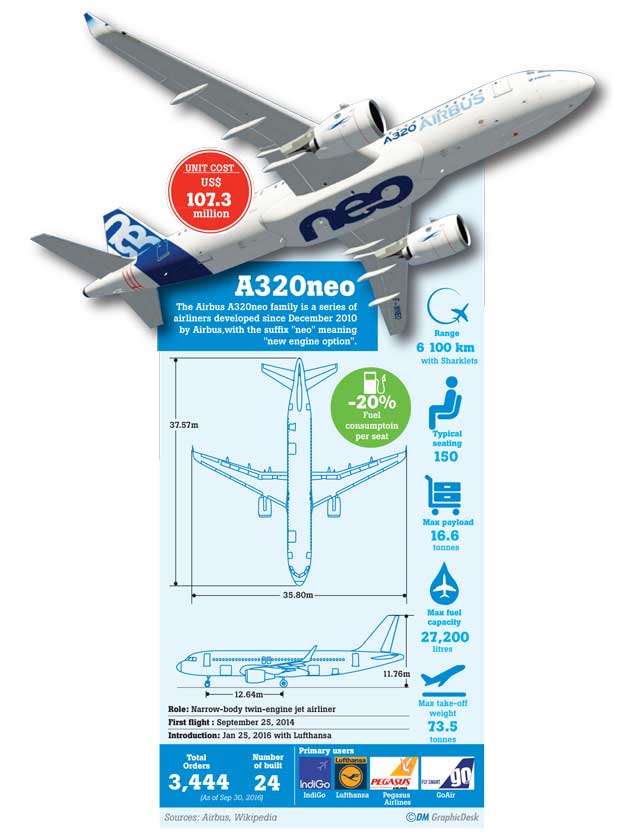
Re-fleeting exercise
The re-fleeting exercise of SriLankan initiated with the blessing of the previous Mahinda Rajapaksa regime was in the heart of controversy. Interestingly, some ministers in the coalition government recently were seen attempting to belittle the alleged bond scam by pointing out the corrupt deals that were said to have been made during the placing of orders for new aircraft with Airbus. If any corrupt deals had been struck in this process, it’s the responsibility of the ‘yahapalana’ administration to bring the perpetrators to book. The role expected from SriLankan by respective governments should be examined carefully before arriving at a sensible conclusion over the rationality of the decision to replace the aircraft.
Even under the previous administration, the airline had identified that its European routes were losing money, and as the main reason for the airline to bleed -- of course apart from the fuel costs, which accounted for 50% of the airline’s costs. Currently the fuel costs are around 25% of the airline’s overall costs as oil prices have come down drastically.
But the then government and the national carrier appeared to have taken a conscious decision to bare the losses for the time being and even to go ahead with an ambitious plan to re-fleet the airline with borrowed funds and continue servicing the European routes with a better product.
We believe several reasons would have led to this decision. First, the obvious preference of former President Mahinda Rajapaksa towards everything grandiose and extravagant, sometimes even at a loss, to anything austere, even at a profit. After all, wherever MR and his entourage went, he flew SriLankan. Hence for him, an airline with brand-new, state-of-the-art aircraft was a symbol of success of his administration.
The second reason could have been the protectionism-oriented mindsets of the previous regime’s policy makers. They couldn’t get around the idea of disposing any of the loss making state-owned enterprises. Instead of privatizing them, they appeared to have believed that putting more taxpayer money into these institutions could have solved their inherent problems.
The third reason, which seemed to be the most rational, could have been the development of the tourism industry. With the end of the war in 2009, the country’s tourism industry found new vigour and tourist arrivals soared. The hoteliers expanded their operations on borrowed funds, banking on continued higher tourist arrivals as a result of the peaceful environment in the country.
The then government would have believed that under these circumstances, SriLankan as the national carrier had a major role to play i.e. expanding its operations to bring in more and more tourists instead of downsizing its operations. Confirming our hypothesis, former SriLankan CEO Kapila Chandrasena in a previous interview with had said that SriLankan had to think of national interest in the same breath that it thought about its bottom-line. He said that’s why SriLankan shouldn’t trim or abandon its European routes, albeit they were loss making and continued to make a serious dent on the airline’s bottom-line.
Though the economics of this approach -- off setting SriLankan’s losses with higher tourist arrivals and ensuing earnings -- should be questioned and analysed using realistic data, this appeared to be the mandate SriLankan had received from the then government. Hence in this context, replacing the old aircraft with bigger and efficient long-haul ones made sense for the airline.
But again, a note of caution should be added as to whether the government or the airline had any pragmatic plans on how to service the debt secured for such an extravagant spending and at the same time the commercial viability of operating such aircraft.
Change of vision
In contrast, the vision of the Sirisena-Wickremesinghe coalition government for SriLankan appears nothing but austere. Their approach for the airline is clearly bottom-line driven, which could make more sense economically.
The airline, under the instructions from the government, is currently working on to cancel an order for four Airbus A350 aircraft and in the process is tipped to pay US $170 million to AerCap Holdings, the world’s largest independent aircraft leasing company, in penalties. The government is yet to take a decision on another order of four A350 aircraft placed during the Rajapaksa administration, of which the delivery is scheduled from 2022. Aribus A350, which first entered service in 2015 with Qatar airways is a long-range, twin-engine, wide-bodied aircraft.
With the cancellation of these aircraft, the government has clearly chartered a new course for SriLankan—that is for it to become a regional airline, which hopefully has a cash flow to run itself. The airline has already announced its plans to expand its presence in the Indian sub-continent and the Middle East. To India alone, SriLankan now operates 106 flights a week. At the same time, SriLankan, axed its European routes, except London, from this month.
Meanwhile, in a revenue generation attempt, the airline has supplied a brand-new wide-body A330-200, one of the seven ordered by the previous regime and were already delivered to State-run Pakistan International Airline (PIA) on a wet lease to pay the high lease rentals of these aircraft. SriLankan hopes to enter into a long-term dry lease agreement with PIA following the expiration of the wet lease for three A330-200s. Currently, the airline has 13 A330-200s in its fleet, seven new and six old ones, which have been in service for 14 to 17 years.
However, the present government has decided to go ahead with the orders placed for six A320 Neos -- narrow-bodied, one-aisle aircraft. Four of the planes have been leased from Air Lease Corporation and two from AerCap. The first of the aircraft will arrive in the first quarter of 2017. Five would be delivered during the year and the sixth aircraft would be in 2018, and they would be operated in the regional routes. According to the SriLankan management, by the end of this year, the airline would have fourteen A320s and ten A330s.
While some hail the downsizing of the airline, which has been gobbling massive amounts of public money, many in the travel and hospitality sector remain apprehensive, especially about cutting European routes, as such a move could prove costly for the country’s booming tourism industry.
Financial position
The appalling financial status of the airline may have prompted the new government to clip SriLankan’s wings. Also, the country’s current President doesn’t seem to be in need of SriLankan planes carrying him around on his foreign jaunts.
SriLankan is said to have racked up over US $ 3.25 billion in debt -- half of the country’s foreign reserves. On top of that, the government this month merged the State-run budget carrier Mihin Air with SriLankan. Mihin Air, an MR vanity project, which started its operations in 2007, has racked up Rs.17 billion in losses. A top economist in the country recently identified the move as a marriage of two sick individuals, whose babies would be sick too.
SriLankan has been able to narrow its losses for the first five months of this financial year (March to August) compared to the same period of the previous year largely due to windfall from cheap oil prices.
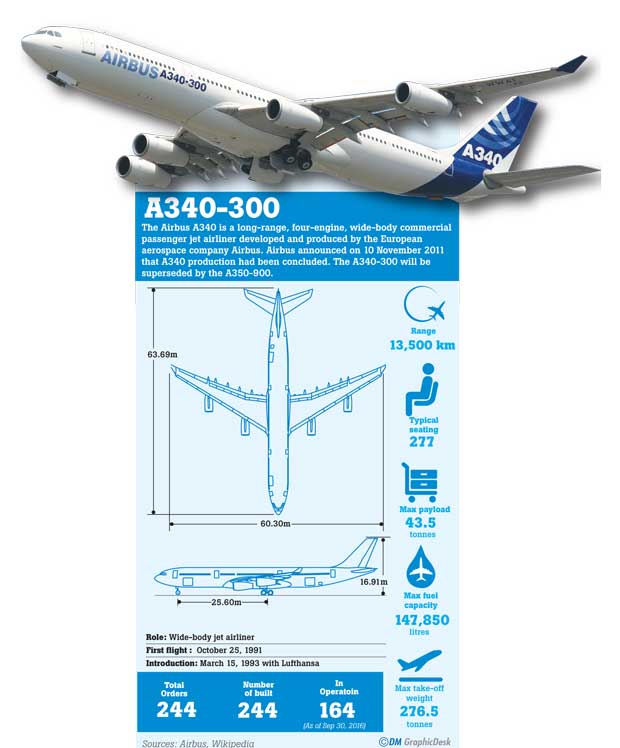
Political noise
It is important to differentiate political noise from what is said about SriLankan. The ministers of the present government recently expressed surprise as to why the previous government ordered aircraft, which could fly 17 hours at a stretch when SriLankan didn’t operate such long-haul flights.
According to aviation experts, although an Airbus A350 has a flying time of 17 to 18 hours, it doesn’t necessarily mean that every airline, which operates A350s fly them for such long hours, at a stretch. They point out in SriLankan’s case, A350s could have been used to service the European destinations as these aircraft have better fuel economies and larger cargo capacities. Particularly, as they point out, if the airline’s core objective was to facilitate tourists from Europe to Sri Lanka, these aircraft would have made a lot of sense with their state-of-the-art onboard technology, onboard amenities and larger cargo capacities. Western Europe is among the top three tourism source markets of Sri Lanka.
Prior to the suspension of flights, SriLankan operated four flights to Paris and five to Frankfurt a week. That is, on average, 5, 400 seats and according to sources at SriLankan, the cabin factor on these routes throughout the year remains around 80 to 85%. During winter season, this could even go up to 90 to 95%, they say.
“I assume the government may have done the numbers before taking the decision to cut Frankfurt and Paris. Suspending those two routes I believe can have a short to medium term impact on tourist arrivals and tourism earnings. I hope the savings from slashing Frankfurt and Paris routes offset a possible loss in tourism earnings,” a tourism professional, who requested anonymity, opined.
An aviation expert spoke to, said if the government was banking on the Gulf carriers to fill the vacuum created by the SriLankan’s pull-out from Paris and Frankfurt, to bring in the European tourists, the assumption could be bit far-fetched.
“SriLankan is pulling out from Paris and Frankfurt because Colombo-Europe routes are making losses. If the routes were lucrative, European or Gulf carriers would have taken over these routes from SriLankan a long time ago,” he said on condition of anonymity.
His claim may carry some merit as British Airways, which resumed its direct flights to Colombo from March 2013, after a 15-year hiatus, ended its operations to Colombo by March 2015, saying the Colombo route was not making a profitable contribution to its business.
At the same time, KLM (Royal Dutch Airline), which began its direct services twice-a-week to Colombo from November 1 said, operations of flights was a seasonal arrangement, targeting winter tourists, and the decision to operate regular flights going forward would depend on customer demand. KLM is currently the only European airline that serves Colombo.
The present government’s strategy to rescue SriLankan is to trim its unnecessary fat, write-off its debt and find a foreign partner for it to reborn as a public-private partnership. Some may agree on this model but others may not.
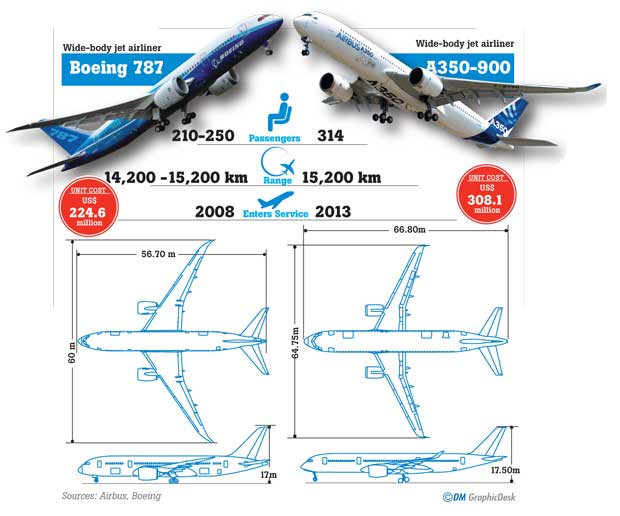
The bottom-line however is, that SriLankan has always been a pawn in the political chess game, more or less like the other State-owned enterprises. Whichever government that came into power, first politicized and then abused the airline to serve their whims and fancies, damaging the airline’s brand image, which still command substantial respect among international travellers.
Apart from appointing political lackeys to top posts, the previous MR regime used the airline as their private property by re-routing flights as they wished to for their personal needs. In addition, they forced the airline to operate a second hub at Mattala Mahinda Rajapaksa Airport (MRIA), where they admitted seven passengers per flight were served on average in 2014.
However this was not limited to the MR government. During the late 80’s and early 90’s, planes were rescheduled for certain big wigs in the Premadasa regime to attend various recreational activities abroad.
In conclusion, all the governments that have ruled the country so far -- green or blue -- should admit that State-owned enterprises are making and have become unbearable burdens to the country’s economy due to their stupid and rash actions. Politicization is in the heart of all evils and SriLankan is no exception.
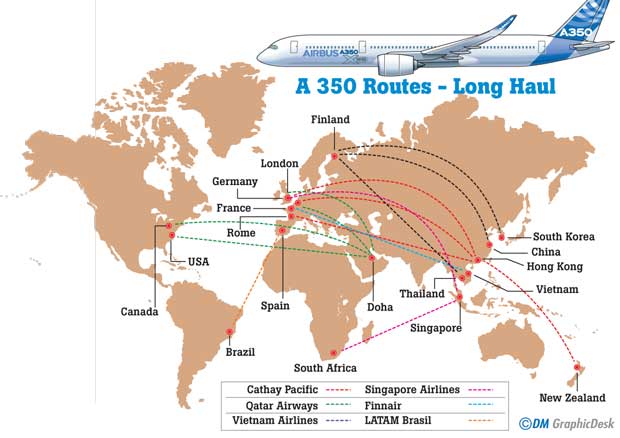
The procurement of Airbus A350-900 aircraft has been the main bone of contention. The new government and the new SriLakan senior management argue that purchasing expensive A350s will be waste of public funds. So they have now gone onto cancelling the orders placed for four such aircraft paying US $170 million in penalties and are yet to decide on another order placed for four similar aircraft, of which delivery is scheduled to begin in 2022.
According to Airbus official website, an A350-900 costs US $ 308.1 million.
“I believe behind the move to acquire A350s was to make SriLankan competitive in the global aviation market and offer a better service to the customers, which is an expensive but I believe is the right move,” according to a senior aviation industry expert who spoke to Dailymirror on condition of anonymity. As he pointed out SriLankan had not been able to offer a uniform product, especially to its European routes, where customers are very demanding. This has been a major low point to the airline’s brand image and its competitiveness, according the source.
“On SriLankan’s European routes, it was not always the same aircraft the customers had to travel during their inbound/outbound journey. As a result, there had been a lot of customer complaints about broken TV screens, non-reclining seats etc.,” he said.
“If SriLankan wants to compete in the market place as a true international airline, having A350s at your disposal is important,” he added.
He also noted the massive cargo space A350s come with would have been an additional advantage, specially on the European routes.
“The plan was to service the aircraft European routes -- London, Paris and Frankfurt -- which were key tourism markets for Sri Lanka. So the cargo space these aircraft offered was a great incentive for tourists, who come for at least 10 to 15-day holidays, in selecting SriLankan over any other Gulf or European carriers,” he remarked.
However, another aviation sector expert Dailymirror spoke to, held differing views over the whole A350 affair. “SriLankan should never have ordered A350s which are too expensive and we do not need the range. What we need is A330s,” the source said on condition of strict anonymity.
According to Airbus official website the revised cost of an A330-200 US $ 231.5 million. “If we can fly to London non-stop with an A330, we can go to anywhere in Europe non-stop. So why buy A350s? Especially when the national carrier is financially in the doldrums,” he argued.
Explaining his point further, he noted that A350s have a very long range and SriLankan doesn’t service such ultra-long routes, where flying time ranges between 14 to 18 hours.
However, some of the Gulf carriers, which benefit from extra cheap oil, operate A350s on relatively short routes.
SriLankan Airlines CEO Suren Ratwatte during a recent press conference said that the emphasis had been on getting the right fleet for the strategy they feel that is profitable to the airline.
“These (four A355s) aircraft were contracted for 12 years each. So that is 144 months at a lease rate, which is no longer competitive. Because we are rationalizing our route network, we do not need these aircraft” he said.
According to SriLankan Airlines Chairman Ajith Dias, if these aircraft were taken into SriLankan’s fleet, the losses to the airline would have been unbearable.
“The total contingent liability was US$ 800 million (the total lease amount for the four A350s). (And) US$ 480 million operating loss (the total loss of operating these aircraft for 12 years) is US$40 million (a year) multiplied by 12,” said the national carrier’s chairman.
